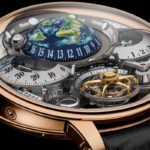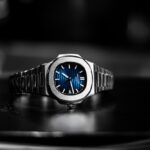In the realm of innovative energy solutions, a recent experiment has captured the imagination of both scientists and curious minds alike.
Imagine powering a quartz watch, a marvel of precision engineering, using a substance as mundane and often overlooked as earwax.
While it might sound like the stuff of science fiction, this concept has transitioned from the realm of the improbable to the scientifically intriguing.
The Unlikely Source of Power
Quartz watches, known for their remarkable accuracy, rely on a tiny piece of quartz crystal to maintain timekeeping precision.
This crystal oscillates at a consistent frequency when an electrical current is applied, serving as the heartbeat of the watch. Conventionally, these watches are powered by batteries, ensuring a constant and reliable energy source.
However, a recent experiment has demonstrated that even the most unexpected materials can potentially generate the electricity required to power these timepieces.
The humble substance in question is earwax, a substance secreted by the ceruminous glands in the human ear canal.
While earwax typically has little use beyond its natural function of protecting the ear, researchers have discovered its latent potential as an energy source.

The Science Behind the Innovation
The experiment revolves around the concept of the “triboelectric effect.” This phenomenon occurs when certain materials acquire an electrical charge through friction.
When different materials come into contact and then separate, the resulting movement of electrons generates a small electric charge.
In the context of the earwax-powered quartz watch, the friction between the earwax and an electrode is harnessed to generate the necessary electrical current.
The initial challenge lay in finding a suitable material to serve as the electrode. Researchers settled on copper as a promising choice due to its conductivity and relative ease of procurement.
By attaching a copper electrode to the surface of the earwax and then separating them through mechanical movement, the friction between the two materials generates a minute electric charge.

Practical Applications and Limitations
While the idea of powering a quartz watch with earwax may seem whimsical, there are intriguing possibilities that extend beyond horology. The discovery of this alternative energy source could pave the way for low-power devices in environments where conventional batteries are not feasible.
Imagine remote sensors in harsh conditions or even medical implants that could be powered by the body’s own substances.
However, it’s important to note that this innovation is still in its infancy and faces several significant limitations.
The amount of electricity generated by earwax is minuscule, making it suitable only for devices with extremely low power requirements.
Moreover, factors such as cleanliness, variability in earwax composition, and the need for consistent contact between the materials pose challenges to the practical implementation of this concept.
Concluding Thoughts
The idea of powering a quartz watch using earwax might evoke a mix of amusement and intrigue, but it also exemplifies the spirit of scientific curiosity and experimentation.
Innovation often arises from thinking beyond traditional boundaries and exploring unconventional avenues.
While the earwax-powered quartz watch might not revolutionize the world of energy, it serves as a reminder that inspiration can be found in the most unexpected places.
As research continues, we may see more unusual materials harnessed for energy generation, pushing the boundaries of what is possible and challenging us to think creatively about our energy needs.
Whether it’s earwax or other unconventional sources, the quest for alternative energy solutions is a journey that continues to captivate the minds of scientists and dreamers alike.






